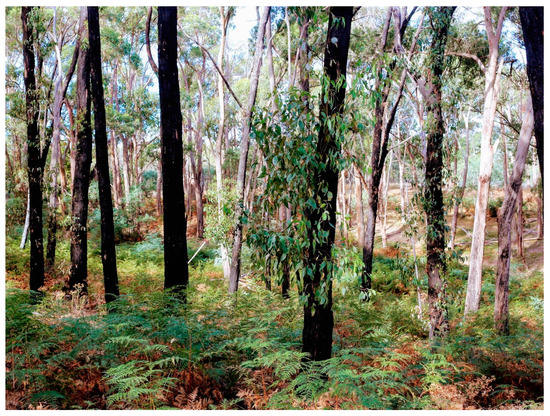As a Diamond Sponsor of NeurIPS 2019, Google will have a strong presence at NeurIPS 2019 with more than 500 Googlers attending in order to contribute to, and learn from, the broader academic research community via talks, posters, workshops, competitions and tutorials. We will be presenting work that pushes the boundaries of what is possible in language understanding, translation, speech recognition and visual & audio perception, with Googlers co-authoring more than 120 accepted papers.
https://ai.googleblog.com/2019/12/google-at-neurips-2019.html
Tuesday, December 17, 2019
The C word - and more
Song Han and Yoshua Bengio:
Y.B>: The C-word, consciousness, has been a bit of a taboo in many scientific communities. But in the last couple of decades, the neuroscientists, and cognitive scientists have made quite a bit of progress in starting to pin down what consciousness is about. And of course, there are different aspects to it. There are several interesting theories like the global workspace theory. And now I think we are at a stage where machine learning, especially deep learning, can start looking into neural net architectures and objective functions and frameworks that can achieve some of these functionalities. And what's most exciting for me is that these functionalities may provide evolutionary advantages to humans and thus if we understand those functionalities they would also be helpful for AI.
Related -
Full transcript
Global workspace theory
Friday, December 13, 2019
Yoshua FIt the Model of Bengio
Monday, November 18, 2019
Using satellite indexes to study global forestation, fires
by Samuel Hislop 1,2,3,*,Simon Jones 1,Mariela Soto-Berelov 1,Andrew Skidmore 2,4OrcID,Andrew Haywood 5OrcID andTrung H. Nguyen 1,3
This paper presents a straight-forward method for comparing the merits of various spectral indices by considering all of the pixels as a single distribution. In this research, we made use of existing reference data to select our candidate pixels, but the method itself does not rely on detailed reference data. The main advantage in using these particular pixels was that they had been systematically sampled, based on plots stratified by bioregion and forest tenure. Thus, they are an accurate reflection of the entire forest estate in the study area. However, by considering all of the pixels as equal participants to a single distribution, detailed information in individual pixels may be lost. Nonetheless, the purpose of the exercise was not to derive detailed information about forest dynamics, but to determine which indices may be best suited for this task. Of the indices that were tested, we consider NBR as the most reliable index for tracking fire disturbance and recovery in sclerophyll forests, due to its consistently high performance across the range of tests performed.
https://www.mdpi.com/2072-4292/10/3/460/htm
This paper presents a straight-forward method for comparing the merits of various spectral indices by considering all of the pixels as a single distribution. In this research, we made use of existing reference data to select our candidate pixels, but the method itself does not rely on detailed reference data. The main advantage in using these particular pixels was that they had been systematically sampled, based on plots stratified by bioregion and forest tenure. Thus, they are an accurate reflection of the entire forest estate in the study area. However, by considering all of the pixels as equal participants to a single distribution, detailed information in individual pixels may be lost. Nonetheless, the purpose of the exercise was not to derive detailed information about forest dynamics, but to determine which indices may be best suited for this task. Of the indices that were tested, we consider NBR as the most reliable index for tracking fire disturbance and recovery in sclerophyll forests, due to its consistently high performance across the range of tests performed.
https://www.mdpi.com/2072-4292/10/3/460/htm
Sunday, November 17, 2019
The Fires Last Time
Tenement fires in New York in the 60s and 70s were a special terror on top of a general horror show. When your or your neighbors’ home burns in the tight quarters of the city it consumes your psyche, not just your belongings, and, even if just briefly, you are on the street. It happened on the Lower East Aide, in Harlem and elsewhere in the boroughs, as landlord neglect set in, as housing got crowded and as old tenement infrastructure decayed. Over time, the flames raged most drastically in the South Bronx. That is the back drop for a 2010 book that looks at this plague era, with a special eye toward the role a think tank’s overhyped computerized statistical analysis played in fanning the flames. Joe Flood’s “The Fires” (Broadly subtitled, “How a computer formulas, big ideas and the best of intentions burned down New York City and determined he future of cities.”) has particular portent in this age, when big data algorithms are a prowling wolf.
The Fires - Amazon.com
The Fires - Amazon.com
Monday, November 4, 2019
Wednesday, October 9, 2019
Johnny B. Goodenough
I found these to be utterly remarkable. At 97, John B Goodenough has just won the Nobel Prize in Chemistry. What a lovable prof! And very telling: He easily cut to the heart on an issue we have continually pondered. The use of technology. Says Googenought: "Our inventions are morally neutral - it depends on how people use them."
🚨Bonus #podcast alert🚨Just ahead of the main show, we’ve got a quick Podcast Extra where @JacquesHughes speaks to John B. Goodenough who was awarded a #NobelPrize in Chemistry today. (Listen out for his infectious laugh). Find it here https://t.co/PZCcLbLn5v pic.twitter.com/5gXPOfbyRr— Nature Pod & Video (@NaturePodcast) October 9, 2019
Tuesday, October 8, 2019
MemSQL through the years
More data is in motion these days, and that leads some shops to opt for newer types of data stores https://t.co/zWIHQWINgN Example MemSQL
— Jack Vaughan (@JackIVaughan) October 15, 2017
NewSQL databases rise anew -- MemSQL, Spanner among contenders https://t.co/0InASvuDxz via @sdatamanagement
— Jack Vaughan (@JackIVaughan) December 14, 2018
#MemSQL unveils #Helios, upgrades flagship #SQL database https://t.co/2IbjpoV9fl
— Datanami (@datanami) September 24, 2019
Subscribe to:
Posts (Atom)


